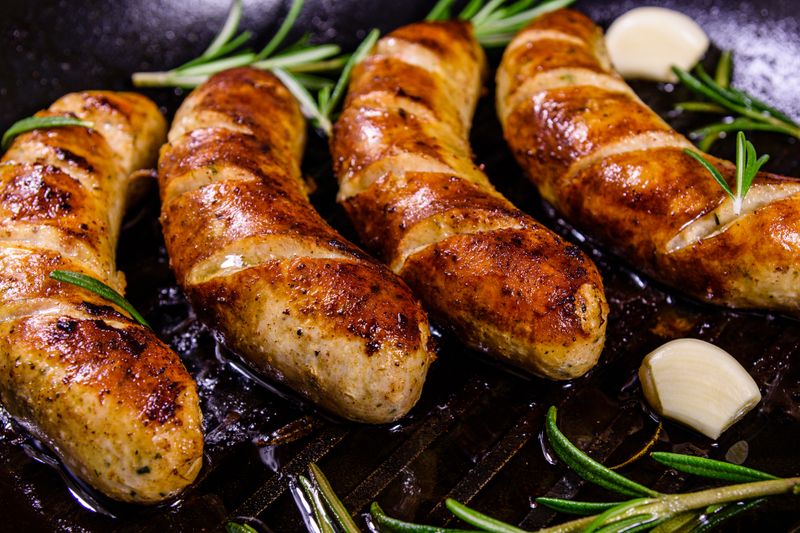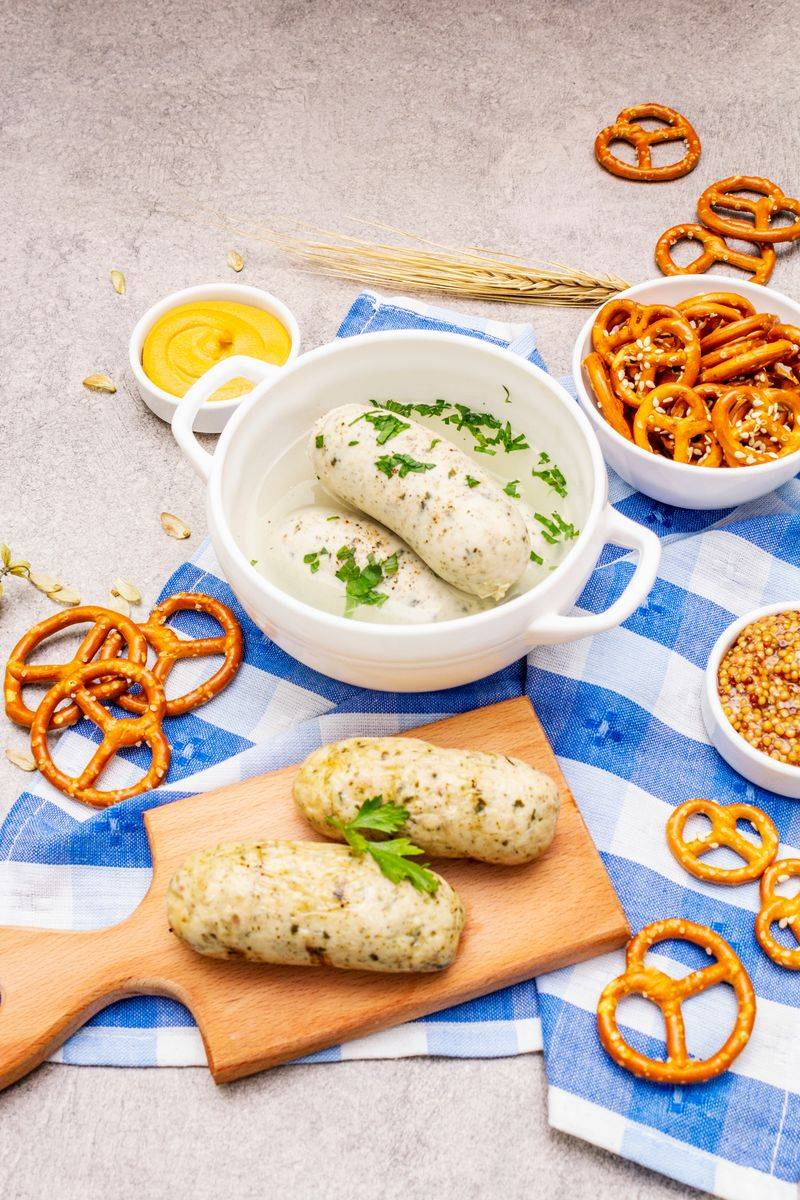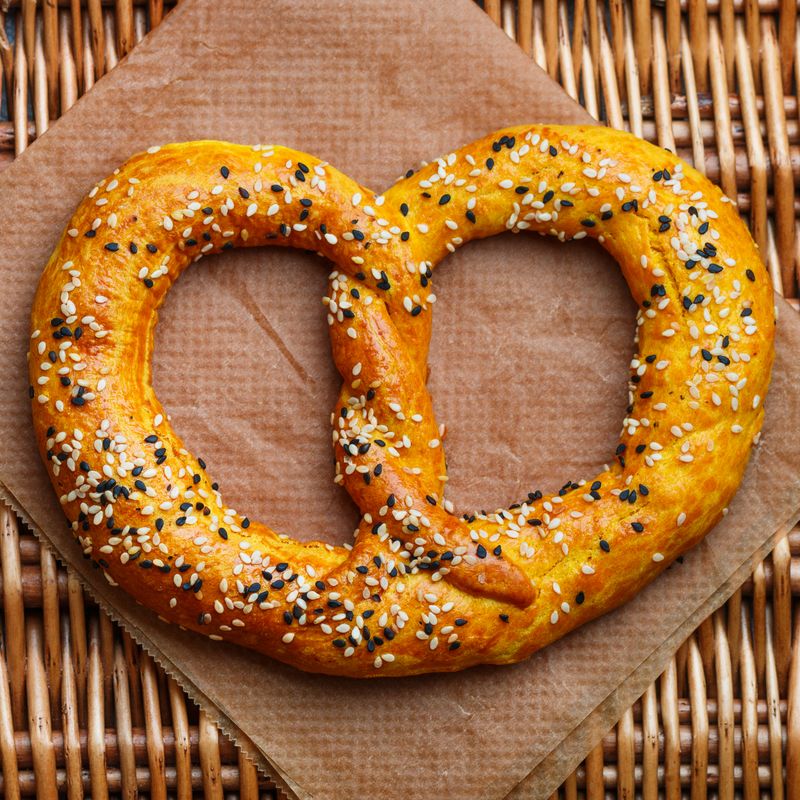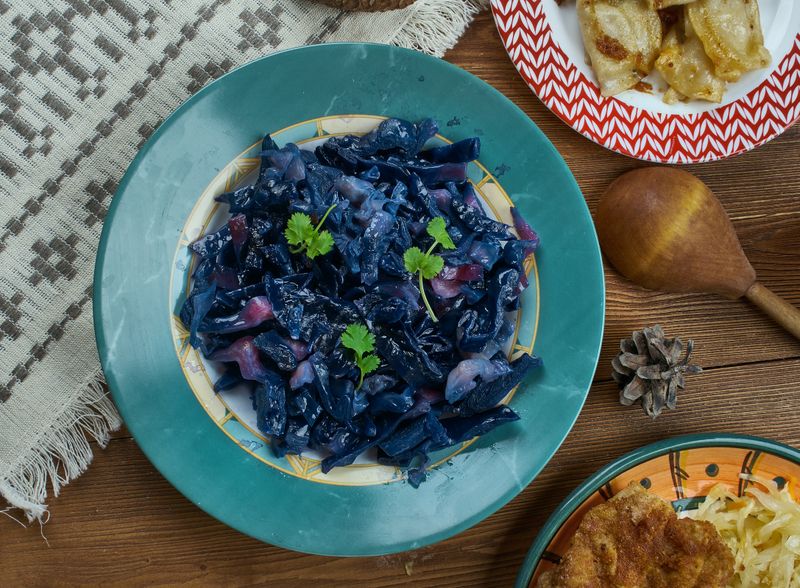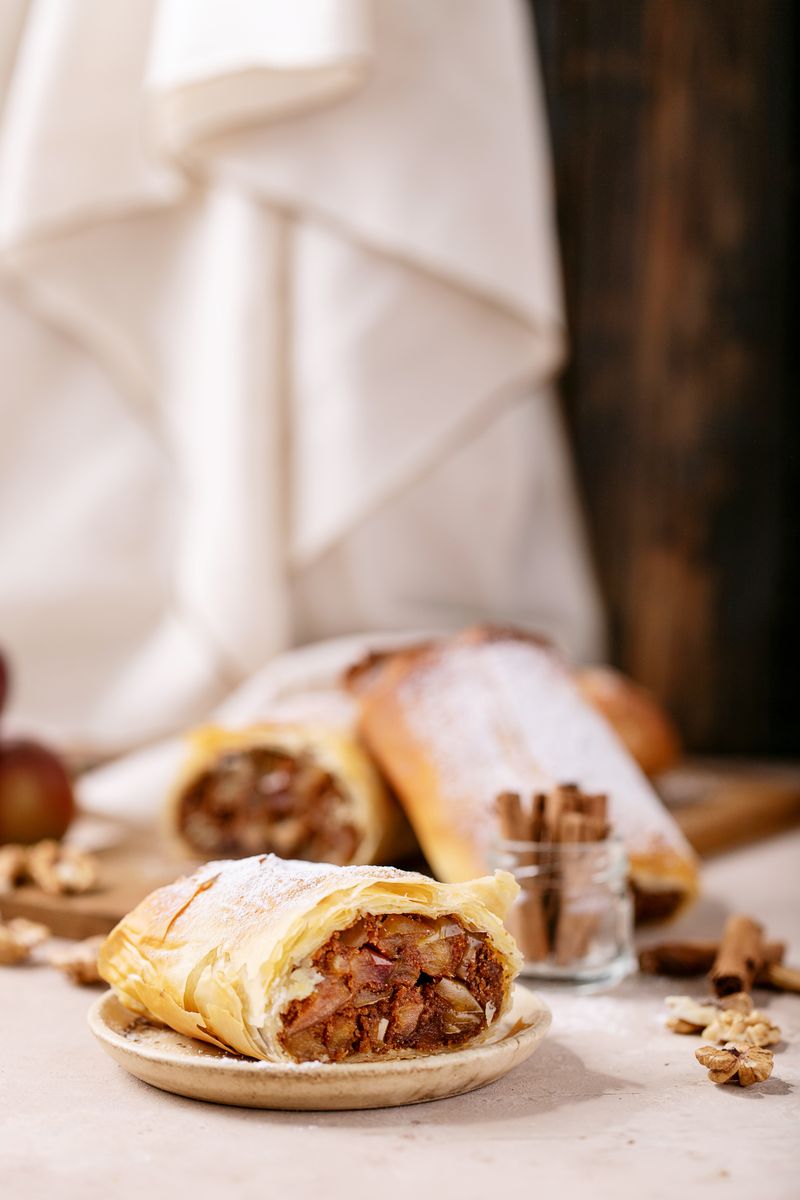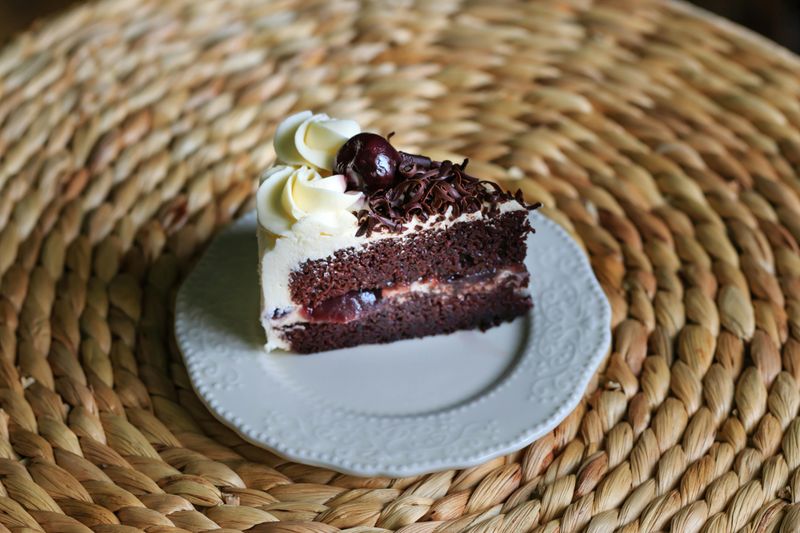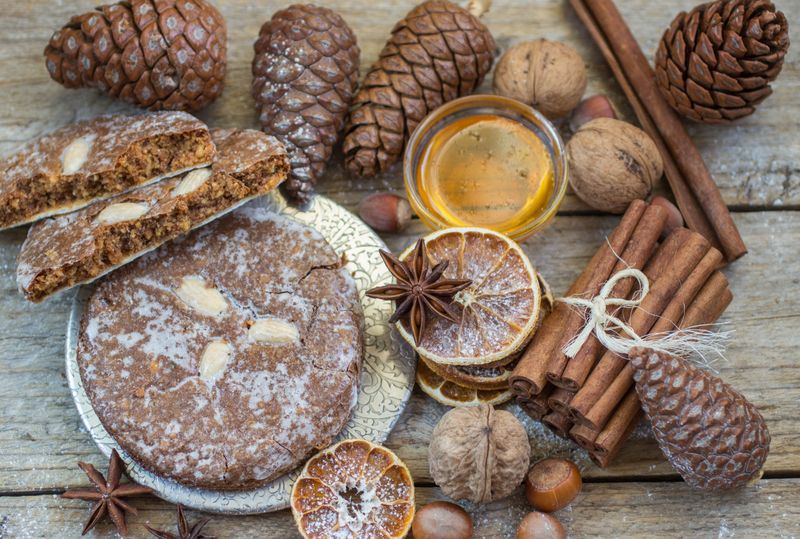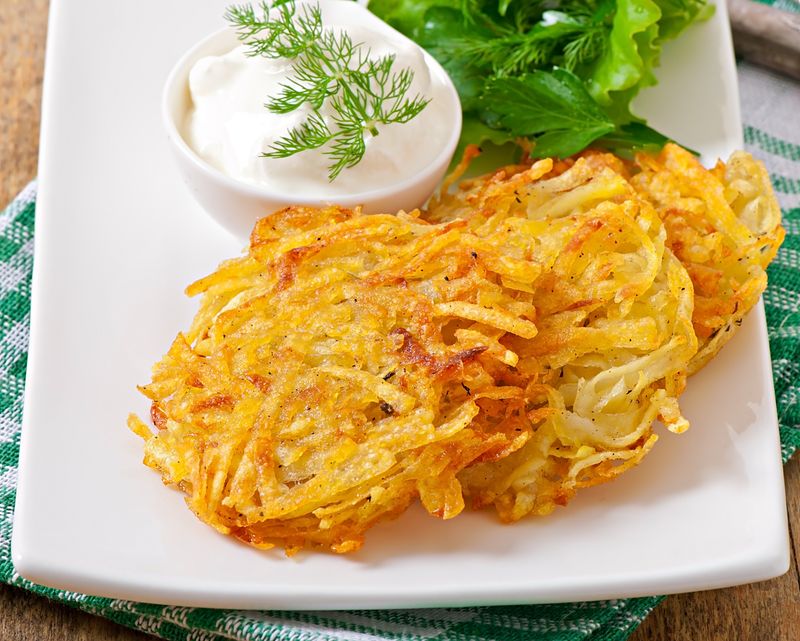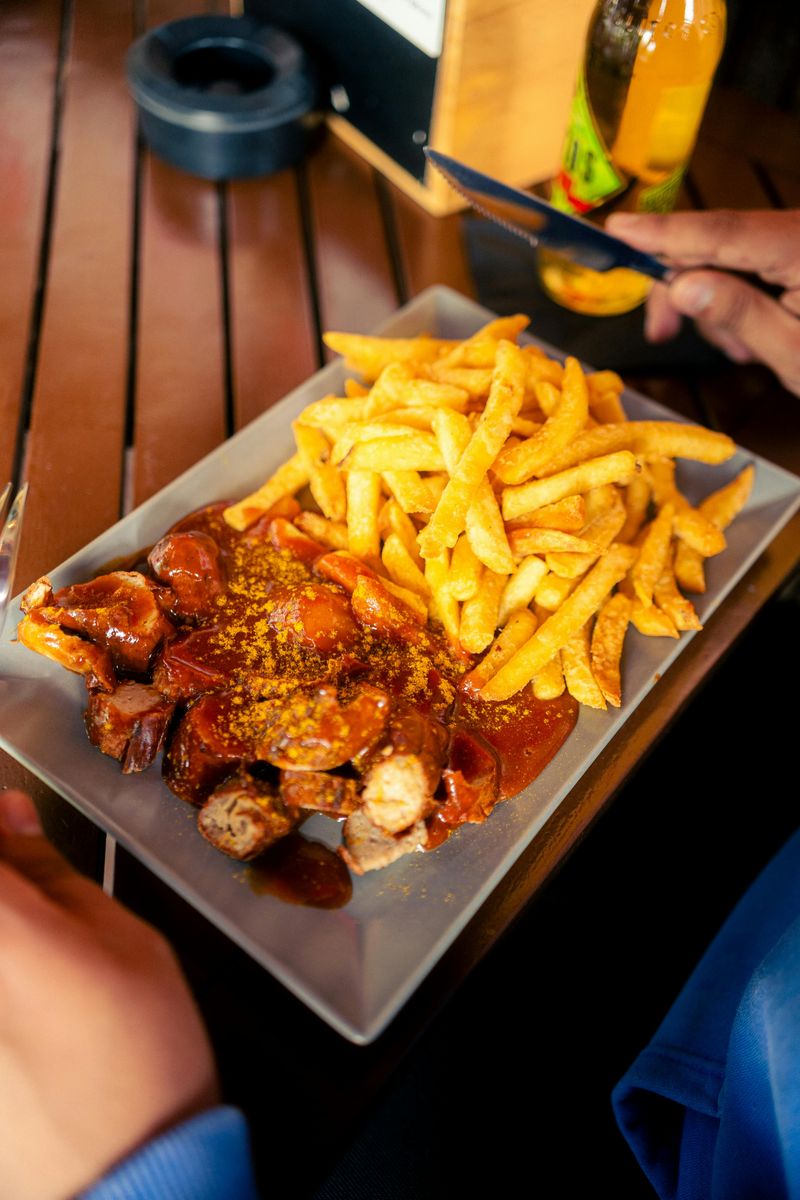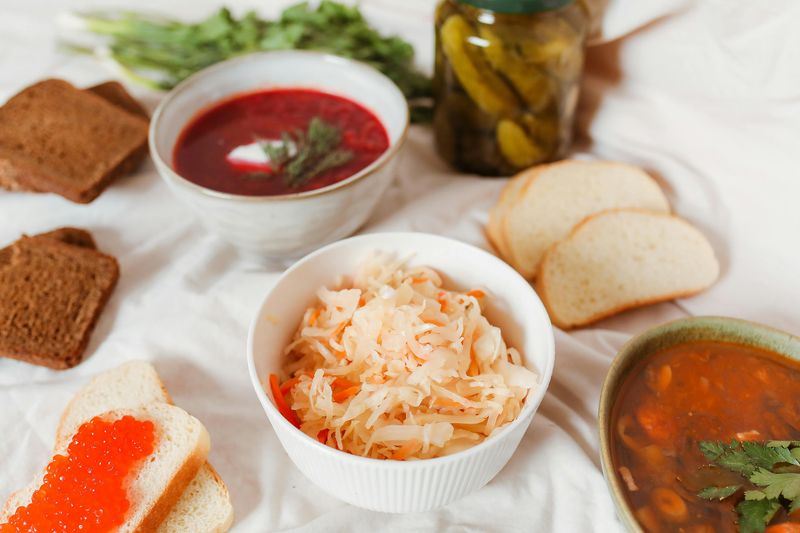Sunday dinners in Germany are a treasured tradition, where families gather to enjoy hearty, flavorful meals together. German cuisine combines simple ingredients with careful preparation to create dishes that truly satisfy the soul. These 13 authentic German recipes will transport your taste buds straight to Deutschland and make your Sunday dinner table something special.
1. Bratwurst
Nothing says German cuisine quite like a perfectly grilled bratwurst! These juicy sausages sizzle with flavor and bring instant comfort to any Sunday table.
Bavarians take their bratwurst seriously, using secret family recipes passed down through generations. The best way to serve them is grilled until golden brown, then nestled in a fresh roll with a dollop of spicy mustard.
For an authentic experience, pair your bratwurst with soft pretzels and a cold German beer. Even picky eaters will clean their plates when these savory sausages are the star of your Sunday dinner.
2. Weißwurst
Weißwurst is famously eaten before noon in Bavaria – locals say these delicate white sausages should never hear the church bells ring at midday.
Made from finely minced veal and fresh pork back bacon, these pale beauties are gently flavored with parsley, lemon, mace, and onions. The cooking technique is crucial – they must be heated in water just below the boiling point to prevent the skins from splitting.
Sweet mustard is the only proper companion for Weißwurst, along with a fresh pretzel and wheat beer. The traditional way to eat them? Sucking the meat right out of the casing!
3. Schnitzel
The sound of meat being pounded thin echoes through German kitchens on Sunday afternoons! Schnitzel preparation is a rhythmic ritual – flatten, bread, and fry to golden perfection.
While Wiener Schnitzel must legally be made with veal in Austria, German cooks often prefer pork for their version. The secret to that signature crispy coating? Pat the meat completely dry before dredging in flour, then egg, then breadcrumbs. And never press down while frying!
A squeeze of fresh lemon brightens the rich flavors, while traditional sides like potato salad or spätzle complete this classic meal. The contrast between the crunchy exterior and juicy meat inside makes every bite a delight.
4. German Potato Salad
Regional rivalry plays out deliciously in Germany’s beloved potato side dish! Northern Germans swear by their creamy mayo-based version, while Southerners defend their warm, vinegar-dressed creation with passion.
The southern style, especially popular in Bavaria, features sliced potatoes tossed in a hot bacon dressing while still warm. This allows the potatoes to soak up all those smoky, tangy flavors. Fresh herbs like parsley and chives add brightness to balance the richness.
Unlike American potato salads that are often chilled, authentic German potato salad is typically served warm as the perfect companion to grilled meats. The bacon bits scattered throughout add little bursts of savory goodness in every forkful.
5. Pretzels
Twisted into their distinctive shape by Bavarian monks centuries ago, pretzels remain Germany’s most iconic baked good. The glossy mahogany exterior hides a tender, chewy interior that’s utterly irresistible!
The secret to authentic pretzels lies in the lye bath before baking. This alkaline dip creates the characteristic dark crust and distinctive flavor. Home bakers can substitute baking soda for a similar (though milder) effect.
Fresh from the oven, sprinkled with coarse salt crystals that crunch between your teeth – nothing compares! Germans enjoy their pretzels as a snack, breakfast item, or alongside a hearty main dish. Try tearing off pieces to dip in sweet mustard or soft cheese for the full experience.
6. Rotkohl
Ruby-red and aromatic, Rotkohl transforms humble cabbage into a sweet-sour symphony that complements hearty German meats perfectly. The vibrant color alone makes it a standout on any Sunday dinner table!
Slow-cooking is the key to developing deep flavors in this classic side dish. Thinly sliced red cabbage simmers with apples, onions, and a careful balance of vinegar and sugar. Regional variations might include red wine, cloves, juniper berries, or bay leaves.
Germans love how Rotkohl’s tangy profile cuts through rich foods like roasted pork or duck. The dish actually improves with time, making it perfect for Sunday meal prep. Many families make a big batch, enjoying the leftovers throughout the week as the flavors continue to develop.
7. Apple Strudel
Golden pastry stretches impossibly thin, revealing the spiced apple filling beneath – this is the magic of authentic Apfelstrudel! While often associated with Austria, this beloved dessert is equally treasured in German homes.
Making proper strudel dough requires patience and skill. Traditional bakers stretch it so thin you could read a newspaper through it! The filling combines tart apples with cinnamon, sugar, raisins soaked in rum, and chopped nuts for texture.
8. Black Forest Cake
From the misty mountains of southwestern Germany comes a dessert that’s pure decadence! Schwarzwälder Kirschtorte combines chocolate, cherries, cream, and a splash of cherry brandy into a show-stopping finale for any Sunday dinner.
Building this towering masterpiece requires attention to detail. Layers of airy chocolate sponge are brushed with Kirsch (cherry schnapps) and separated by whipped cream and sour cherries. The cake’s dramatic appearance comes from chocolate shavings and plump cherries decorating the top.
9. Lebkuchen
Centuries before gingerbread became popular worldwide, German monks were perfecting Lebkuchen in their monastery kitchens. These spiced cookies carry the warmth of history in every bite!
The dough gets its distinctive flavor from a special spice blend called Lebkuchengewürz – typically cinnamon, cloves, anise, cardamom, coriander, ginger, and nutmeg. Honey provides sweetness and helps preserve the cookies, which traditionally were made weeks before eating to allow flavors to develop.
10. Potato Pancakes
Grandmothers across Germany guard their Kartoffelpuffer recipes with fierce pride! These crispy potato pancakes transform humble spuds into crunchy-outside, tender-inside discs of pure comfort.
Freshly grated potatoes form the base, with the starchy liquid squeezed out to ensure maximum crispiness. Onion, egg, and a touch of flour bind everything together before the mixture hits the hot oil. The sizzling sound and potato aroma filling the kitchen signal good things coming!
11. Currywurst
Born from post-war ingenuity on the streets of Berlin, Currywurst has risen from humble beginnings to become Germany’s beloved fast food! This simple yet addictive dish represents German culinary creativity at its finest.
Legend credits Herta Heuwer with its invention in 1949, when she bartered spirits for ketchup and curry powder from British soldiers. The magic happens when steamed-then-fried pork sausage gets sliced, drizzled with tomato sauce, and dusted generously with curry powder.
While traditionally eaten on-the-go from street vendors, Currywurst has earned its place at casual Sunday dinners too. Served with a side of crispy fries or a crusty roll for sauce-sopping, this unpretentious dish brings people together. Germans consume over 800 million portions annually – clear evidence of its irresistible charm!
12. Sauerkraut
Fermentation magic transforms ordinary cabbage into Germany’s most famous preserved food! Sauerkraut’s tangy flavor and probiotic benefits have made it a staple on German tables for centuries.
The process is beautifully simple – finely shredded cabbage is salted and packed into crocks where natural fermentation creates that characteristic sour taste. Regional variations might include juniper berries, caraway seeds, or apples for added complexity.
Far from just a hot dog topping, proper German sauerkraut is often slowly cooked with onions, apples, and white wine until meltingly tender. This tangy side dish cuts through fatty meats perfectly, making it the ideal partner for Sunday roasts or sausages.

